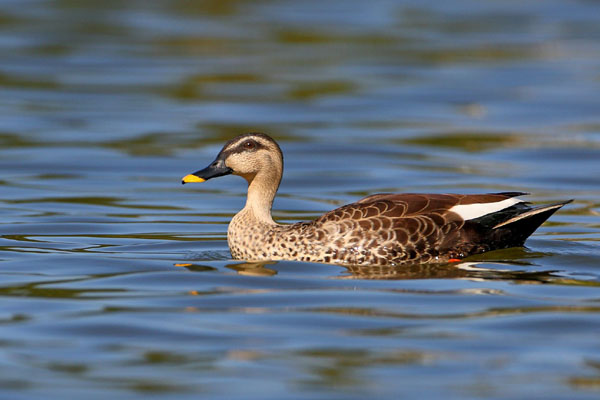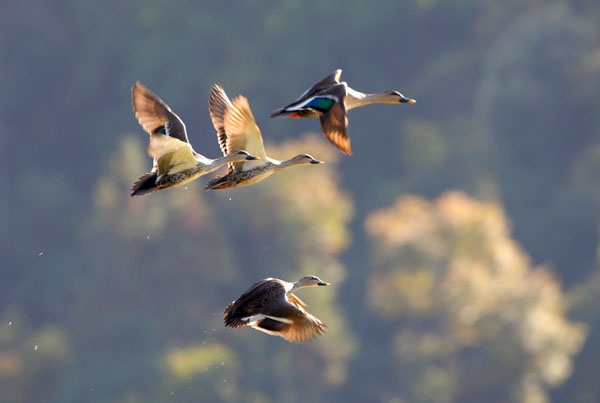Anas poecilorhyncha
IUCN
LCBasic Information
Scientific classification
- name:Anas poecilorhyncha
- Scientific Name:Anas poecilorhyncha,Indian Spot-billed Duck,Indo-burmese spotted duck
- Outline:Waterfowl
- Family:Anseriformes Anseriidae
Vital signs
- length:50-64cm
- Weight:About 1 kilogram
- lifetime:6-8years
Feature
The upper mouth is black, the tip yellow, the feet orange yellow, the forehead to the pillow brown, easy to recognize.
Distribution and Habitat
Chinese resident birds are found in southern China and have been recorded breeding in Hong Kong for many years, with winter occurrences in southern Yunnan, Guangdong and Hong Kong. Foreign resident birds are distributed in the Indian subcontinent, Burma and Laos in the northern Indochina Peninsula, and wander to Thailand in winter.
The habitat waters are diverse and can be found in inland and coastal lakes, reservoirs, ponds, lakes, rivers, swamps and mangroves. Foraging in shallow water areas and farmland and other habitats, mainly plant food, rest often in pairs or clusters floating on the surface.
Appearance
The body feathers are similar to those of a macular-bill duck, but there is no obvious lower cheek line, the brow line is the same color as the cheek, the wing mirror is green rather than blue-purple, and the white edge of the wing mirror is wider than the latter. The male and female have similar plumage, but the female has a darker body color and a lighter macula at the end of the beak. Iris dark brown, beak black with bright yellow ends, feet red or reddish-yellow.
Details
Mallard, a similar species of Indian grouper, has a similar size, but its body color is obviously different. The male mallard duck has a green head and looks black from a distance, while the female duck has a darker head and a lighter body colour, so it is easy to recognize when flying or at a great distance.

To stay as a bird. In addition to the breeding season, they often move in groups, and also mix with other ducks. Good at swimming, also good at walking, but rarely diving, often put the head under the water, the tail up to hunt for food. Activities are often in pairs or scattered into small groups to swim on the surface of the water, and rest in the beach or the island in the water. Sometimes the head is turned on the back, the mouth is inserted under the wings, and the water is floating to rest. Early in the morning and at dusk, flocks flock to nearby farms, fields, ditches, ponds, and swamps for food. The sound was loud and clear and could be heard at a distance.
Mainly eat plant food, common aquatic plants are mainly leaves, buds, stems, roots and pine algae, floating algae and other aquatic algae, grass seeds and grain seeds. They also eat animal foods such as insects and mollusks.

The relationship of this species is monogamous. Due to the different water levels in northern and southern India, the breeding season is also different: i.e. from July to October in northern India and November to December in southern India. Nest in lakes, rivers and other waters shore grass or reeds, also nest in the coast of the rocks or the water side of the bamboo, in the mountain forest river bank rock wall crevices also found nesting. The nest is mainly composed of moss, grass stems and grass leaves. After spawning begins, the parent birds pull down the feathers from their own bodies and put them around the nest. The structure is very delicate.

Indian mottled ducks are known to mate naturally with other mallards of the same species, and have interbred with Pacific black ducks and brown-necked ducks.








